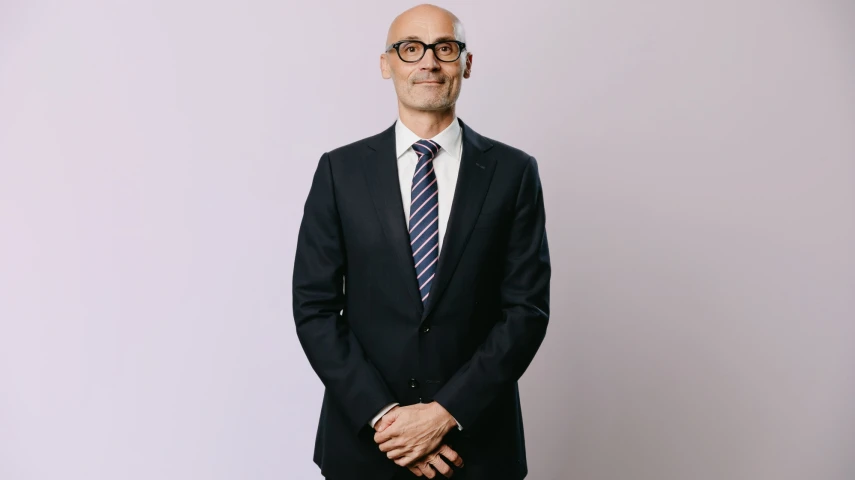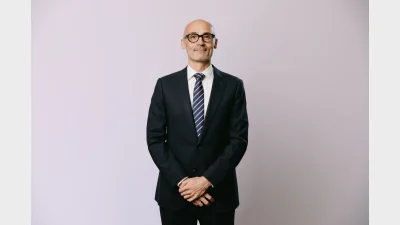One on one with Aware Super: Embracing dynamism



Super Review’s one-on-one series aims to spotlight key investment insights from the superannuation sector.
This week, Michael Winchester, head of investment strategy at Aware Super, unpacks how the fund navigates an evolving investment landscape, including how opening an overseas office has helped provide new sources of growth.
What are some key opportunities you see over the next year across asset classes and across global regions?
As one of Australia’s largest profit-for-member super funds, we currently manage over $180 billion for our 1.15 million members and actively seek opportunities to deliver them long-term returns for a secure and comfortable retirement.
As a growing fund, we’re always on the lookout for opportunities and we’re seeing a great pipeline across a number of asset classes at the moment. In particular, I’d call out infrastructure, where we’ve been able to acquire a number of assets with strong tailwinds in the digital infrastructure space and I can see us doing more here in the coming years. The energy transition is probably the most significant investment opportunity we’ll see in our lifetime and one which cuts across all asset classes.
This economic cycle has been pretty unusual and the divergence within equity markets has led to historically wide valuation differences, which we think will provide an excellent environment for active management going forward.
When it comes to weighing options between Australia versus overseas, what’s your thought process there? How is Aware’s overseas office helping with the fund’s overall investment strategy?
We will always have a strong presence here in Australia. It’s a market we know well, where we’ve established strong platforms for growth and where we have a good pipeline of future opportunities.
As one of the larger superannuation funds, our scale has allowed us to establish a presence on the ground in London and, within just 12 months, we’re already seeing the benefits. From a sourcing perspective, the team have been very busy and we’ve executed on some large transactions already, including an investment in Octopus Energy, one of the UK’s leading green energy companies, and euNetworks, Europe’s bandwidth and data centre connectivity leader.
One of our key strengths as a fund has been having experienced investors, who are close to the markets, making investment decisions. This has allowed us to be really dynamic and forward-looking in the way we’ve managed portfolios and having people offshore now will provide even greater opportunities for diversification and new sources of growth.
The investment landscape has significantly changed in the last few years. Could you elaborate on how Aware’s portfolios have evolved in response?
The past five years have been quite remarkable. The global pandemic and massive fiscal response to it finally saw the end of the low growth, low inflation regime we’d been in since the global financial crisis. In many ways, though, what we see now looks more familiar. Cash rates and bond yields around the world at 4–5 per cent mean we’re now getting a pretty decent return on defensive assets and we expect that they’ll provide good diversification during periods of economic weakness.
One thing that has changed of course is that we saw a big spike in inflation and while across the world it’s well down now from the peak, we do expect to see a higher average and wider range of inflation outcomes than we got used to in the post-GFC years. This means investors that are able to access assets with inflation linkages, such as real assets, will be in a better position to deliver smoother returns.
Our flexible mandate allows us to be agile and forward-thinking and this has helped us navigate this period of change with robust portfolios focused on the future. We’ve been a first mover in a number of emerging and new sectors as well as pivoting to those which had previously been out of favour. For example, our focus on industrial property and retirement living and holding less in retail meant our property portfolio performed much better than most.
Looking forward, those big thematic changes of digitisation, decarbonisation, deglobalisation, and demographic shifts are creating tailwinds that our teams can capitalise on to differentiate our portfolios and deliver strong, long-term returns to members.
Are there any significant changes or adjustments to your investment strategy that you plan to implement in the coming year?
We’re a long-term investor because our members generally have a long-term investment horizon. That said, we know that being active in the short term can also help to deliver additional returns and manage risk, so we’re quite willing to respond to market conditions and adjust our asset allocation accordingly. The next year will be interesting as we’re seeing inflation fade and the focus shift to jobs and growth, rate cuts, and the question of whether the economic slowdown will end up with a recession or a more benign soft landing.
We have also been exploring how we can better harness data and new technologies to enhance our decision making and generate efficiencies.
What initiatives are you pursuing to enhance member outcomes and ensure that your fund remains competitive?
Our investment approach is members first: everything we do every day has members at the heart of each of our decisions. We’re especially proud to have delivered our accumulation members two consecutive financial years of double-digit returns in our High Growth option, where most of them are invested. For a typical member joining our fund at the start of their career, around half of their balance at retirement is likely to come from investment returns, so it’s really important to make sure we make the most of that long-term investment horizon and help them achieve their best retirement.
By actively managing our diversified portfolio and focusing on key initiatives like further internalisation across the asset classes, we’ve seen better returns and lower fees, which means more in members’ retirement savings.
Recommended for you
Australia’s largest superannuation fund has confirmed all members who had funds stolen during the recent cyber fraud crime have been reimbursed.
As institutional investors grapple with shifting sentiment towards US equities and fresh uncertainty surrounding tariffs, Australia’s Aware Super is sticking to a disciplined, diversified playbook.
Market volatility continued to weigh on fund returns last month, with persistent uncertainty making it difficult to pinpoint how returns will fare in April.
The Association of Superannuation Funds of Australia (ASFA) has called for the incoming government to prioritise “certainty and stability” when it comes to super policy.












